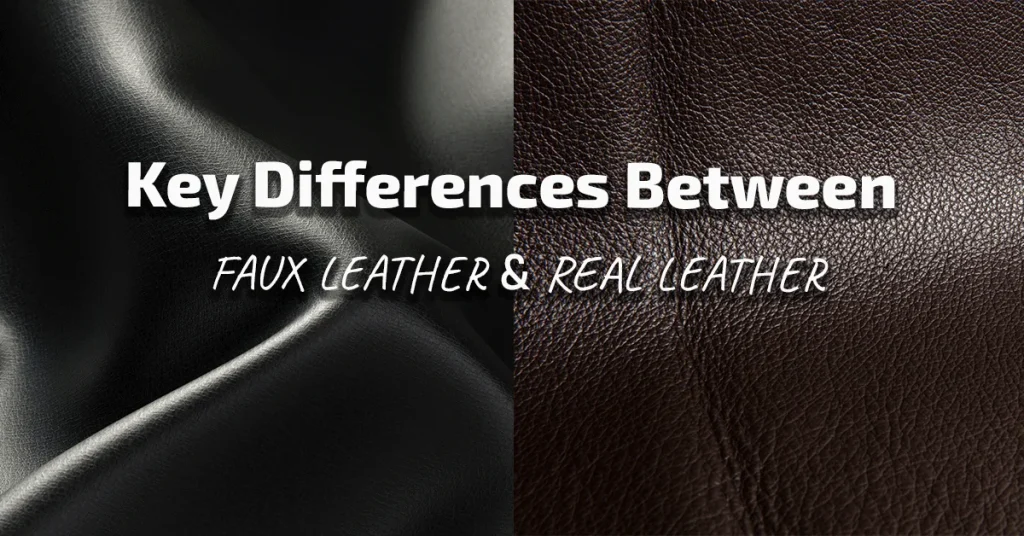
Leather jackets have long been a staple in fashion, offering a blend of durability, style, and timeless appeal. However, with growing awareness of ethical and environmental concerns, many consumers are exploring alternatives to traditional leather. Faux leather, in particular, has gained popularity as a viable option. This guide will explore the key differences between faux leather and real leather jackets, helping you make an informed choice.
What is Real Leather?
Real leather is made from the hides of animals, typically cows, but also sheep, goats, and other animals. The process of turning animal hides into leather involves tanning, which preserves the hide and prepares it for use in clothing and other products. There are various types of real leather, including full-grain, top-grain, and genuine leather, each with its own characteristics and quality levels.
Benefits of Real Leather
- Durability: Real leather is known for its strength and longevity. A well-made leather jacket can last for decades with proper care.
- Patina Development: Over time, real leather develops a unique patina, a sheen that gives the jacket character and enhances its appearance.
- Comfort: Leather is breathable and conforms to the body, becoming more comfortable with wear.
- Aesthetic Appeal: The natural texture and smell of real leather are often considered more luxurious and desirable.
What is Faux Leather?
Faux leather, also known as synthetic or vegan leather, is made from artificial materials designed to mimic the look and feel of real leather. Common materials used in faux leather include polyurethane (PU) and polyvinyl chloride (PVC).
Benefits of Faux Leather
- Affordability: Faux leather is generally less expensive than real leather, making it accessible to a wider range of consumers.
- Ethical Considerations: As it does not involve animal hides, faux leather is a cruelty-free option, appealing to vegans and animal rights supporters.
- Variety: Faux leather can be produced in a wide range of colors and textures, offering more design versatility.
- Maintenance: Faux leather is often easier to clean and maintain, as it is resistant to water and stains.
Key Differences Between Faux Leather and Real Leather

1. Material Composition
- Real Leather: Made from animal hides and involves a tanning process.
- Faux Leather: Made from synthetic materials like PU or PVC.
2. Appearance and Texture
- Real Leather: Has a natural grain and unique imperfections. It feels soft and supple to the touch.
- Faux Leather: Can be manufactured to look very similar to real leather, but often has a more uniform appearance. The texture may feel less natural.
3. Durability and Longevity
- Real Leather: Highly durable and can last for many years if cared for properly. It becomes more comfortable over time.
- Faux Leather: Generally less durable than real leather. It can crack and peel over time, especially if not properly maintained.
4. Environmental Impact
- Real Leather: The production involves animal farming and chemical tanning processes, which can have significant environmental impacts.
- Faux Leather: Made from petroleum-based products, its production also has environmental consequences. However, some brands are now using more eco-friendly methods and materials.
5. Cost
- Real Leather: Typically more expensive due to the cost of materials and processing.
- Faux Leather: More affordable, making it a popular choice for budget-conscious consumers.
Choosing the Right Jacket for You

When deciding between a real leather and a faux leather jacket, consider the following factors:
- Purpose and Use: Think about how you will use the jacket. For example, if you need a durable jacket for outdoor activities, real leather may be the better choice. For fashion purposes, a women’s faux leather jacket can be a stylish and affordable option.
- Budget: Determine your budget and weigh the cost against the benefits of each type of leather. Faux leather is a great way to achieve a leather look without the higher price tag.
- Ethical Considerations: If animal welfare is important to you, faux leather or other alternative materials might be the preferred choice. For men looking for ethical options, a faux leather jacket for men offers style without compromise.
- Maintenance: Consider the care and maintenance required for each type of leather. Faux leather is generally easier to clean and maintain, while real leather requires regular conditioning.
Conclusion
Both real leather and faux leather jackets have their own unique advantages and considerations. Real leather offers durability, comfort, and a luxurious feel, while faux leather provides affordability, ethical benefits, and a wide range of styles. By understanding the differences, you can choose the jacket that best fits your needs, lifestyle, and values. Whether you opt for a classic leather jacket or a trendy faux leather jacket for men, you’ll be able to make a stylish and informed decision.






